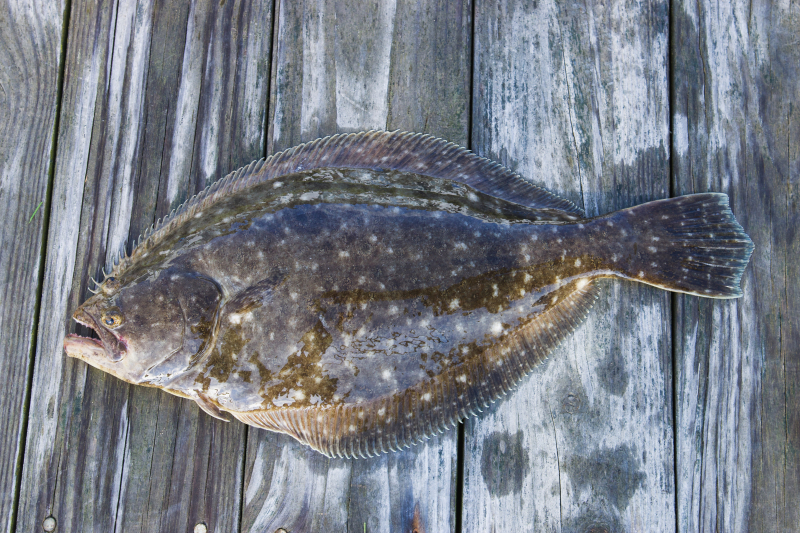Flounder
The flounder, a flatfish known for its unique body structure and distinct way of life, stands as a noteworthy representative among common animals that start with the letter "F." Belonging to the family Pleuronectidae, flounders are marine fish characterized by their highly flattened bodies and a remarkable adaptation that allows them to lie on one side of the ocean floor.
One of the most distinctive features of flounders is their asymmetrically shaped bodies. As young flounder larvae develop, they undergo a fascinating transformation known as metamorphosis. During this process, one eye migrates across the skull, and the fish becomes flat, with both eyes positioned on the same side. This adaptation allows flounders to camouflage themselves seamlessly against the sandy or muddy ocean bottom.
Flounders are widely distributed across various coastal and oceanic regions, ranging from shallow estuaries to deep-sea environments. Their ability to blend into the substrate makes them effective ambush predators. As they lie in wait, partially buried in the sand, flounders patiently stalk their prey, which includes small fish, crustaceans, and other marine invertebrates.
These fish exhibit impressive flexibility in their movements. By using their strong pectoral fins, flounders can "walk" along the ocean floor, propelling themselves forward or backward. This unique locomotion adds to their overall adaptability and enhances their hunting strategies.
Flounders are commercially significant and are often targeted by fisheries for their flavorful and tender flesh. Various species of flounder, such as the Atlantic flounder and the European flounder, are sought after for their culinary appeal. However, overfishing and habitat degradation pose challenges to maintaining sustainable flounder populations.
















